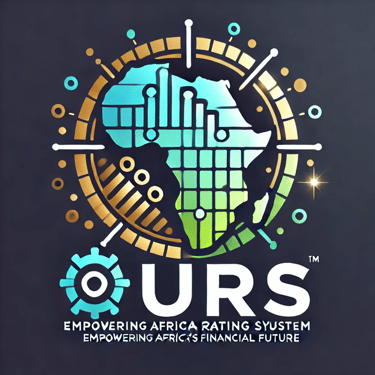When it comes to rating African countries like Ghana, traditional global ratings agencies (such as S&P, Moody's, Fitch, and Trading Economics) often rely on frameworks and methodologies that may not fully capture certain local and unique factors specific to the African context. Here are some of these factors:
1. Informal Economy
The informal sector plays a significant role in many African economies, including Ghana. This sector often accounts for a substantial portion of economic activity, but its contributions are typically underreported or not fully integrated into the GDP calculations and other economic metrics used by global rating agencies.
2. Cultural and Social Capital
Social networks, communal support systems, and traditional practices contribute significantly to economic resilience in many African countries. These elements, which can reduce the perceived economic risk, are often overlooked by global ratings agencies that focus primarily on formal economic indicators.
3. Natural Resources Management
The management of natural resources, particularly in resource-rich countries, is a critical factor. However, the nuances of how these resources are managed locally, including community involvement and environmental sustainability, may not be fully accounted for by global agencies, leading to an incomplete assessment of a country's long-term economic stability.
4. Political and Governance Context
Local governance structures, political stability, and the effectiveness of government policies can vary significantly from region to region within a country. While global agencies might consider national-level governance, they may not account for regional disparities or the influence of traditional governance structures, which can have a significant impact on local economic conditions.
5. Impact of Climate and Environmental Factors
Many African countries are particularly vulnerable to climate change and environmental degradation, which can affect agricultural output, water resources, and overall economic stability. Global agencies might not fully consider how these environmental risks are managed locally or their long-term impact on the economy.
6. Domestic Debt Market Dynamics
The structure and dynamics of local debt markets, including the role of domestic investors and local financial institutions, can differ from those in more developed markets. These nuances, including how local debt is perceived and managed by domestic stakeholders, may not be adequately reflected in global ratings.
7. Microeconomic Resilience
African economies often exhibit a unique form of resilience at the microeconomic level, including community-based financial systems like rotating savings and credit associations (ROSCAs). These informal financial systems provide significant support to local economies but are typically not considered in the risk assessments of global ratings agencies.
8. Cultural Perceptions of Credit and Debt
Cultural attitudes toward credit, debt, and financial obligations can vary significantly across different regions and communities within African countries. These cultural factors influence how credit risk is perceived and managed locally, but they are often overlooked in the standardized assessments of global ratings agencies.
9. Role of Foreign Aid and Remittances
Foreign aid and remittances play a crucial role in many African economies, including Ghana. While global agencies may consider these factors to some extent, they might not fully appreciate their stabilizing effects on the local economy, particularly in times of economic distress.
10. Local Industry and Sector Specificities
Certain industries, such as agriculture, mining, and telecommunications, have unique characteristics in African markets that are not always fully considered by global agencies. This includes the influence of local supply chains, market dynamics, and regulatory environments, which can significantly affect the performance and risk profiles of these sectors.
By not fully considering these factors, global ratings agencies may provide an incomplete or skewed picture of the economic and credit risk in African countries, potentially leading to ratings that do not accurately reflect the local realities.




